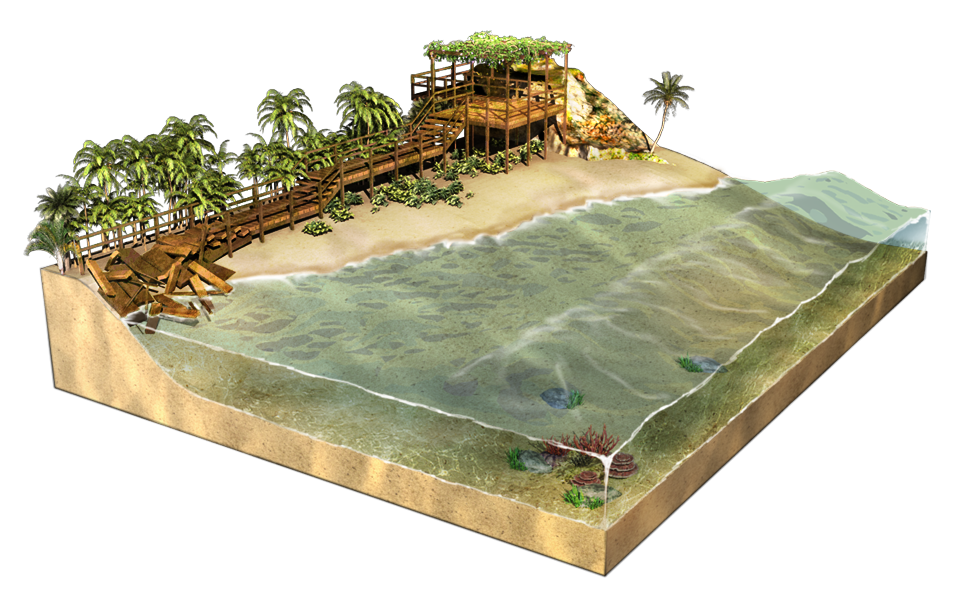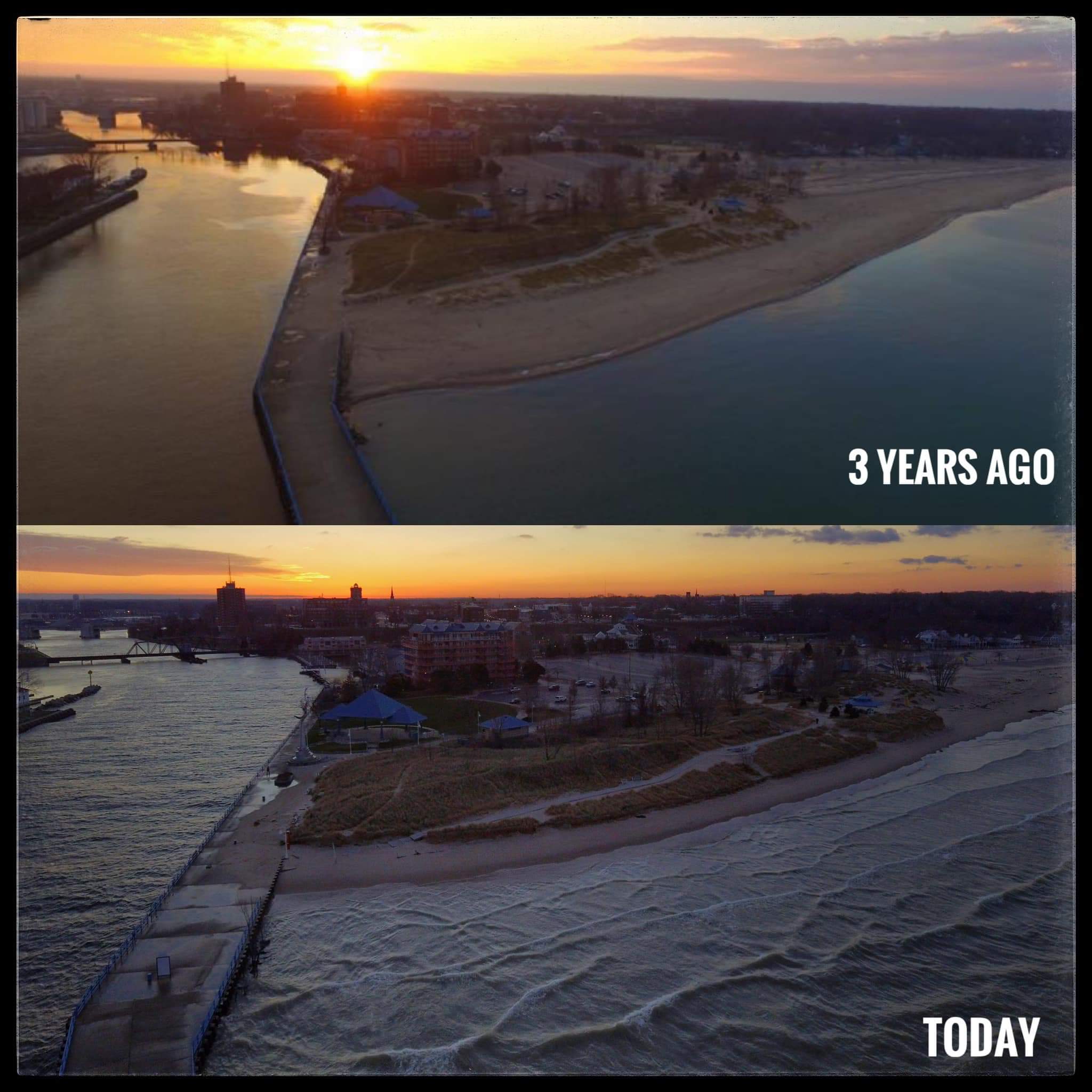Erosion & Protection
This article provides gray and green shoreline stabilization methods that can be further applied to help reduce shoreline erosion and coastal risk.
Gray Shoreline (e.g. concrete seawalls), has commonly been used to protect shoreline but is expensive to build, maintain, and deteriorates coastal vegetation.
Green shoreline (e.g. restored or conserved mangrove and marsh ecosystems) delivers nature-based shoreline protection but in comparatively lower density coastal areas.
Shoreline Erosion
Erosion is the loss or displacement of land or the long-term removal of sediments and rocks along the shoreline. Erosion can be a result of waves’ motion, abrasion, hydraulic action corrosion of wind and water, and other natural and unnatural factors. Landslides are the most common reaction.
Shoreline Protection
Innovative approaches are necessary as our coastal communities and shorelines are facing escalating risks from more floods, accelerated sea-level rise, and changing precipitation patterns that can result in dramatic economic losses.
Protection is classified into soft and hard stabilization. Hard protection is any built concrete structures, and Soft protection is the placement of vegetation and cultivation of lands near or onshore.
Hard stabilization Methods
Man-made Hard structures involves a combination of shore parallel armoring. It fixes the position of the shoreline.


Soft Stabilization Methods
Designed to work with specific site conditions. They mimic nature, like using logs, sand replenishment and native plantings.
The finished product will look and feel natural.
- Beach Nourishment Vegetation only
- Edging
- Sills
- Beach nourishment with vegetation on dunes
In order to determine the most appropriate shoreline protection technique, several site-specific conditions must be assessed
- Reach: A longshore segment of a shoreline where influences and impacts, such as wind direction, and wave energy.
- Resilience: The ability to avoid, minimize, withstand, and recover from the effects of adversity, whether natural or manmade.
- Tidal Range: The vertical difference between high tide and low tide.
- Storm Surge: The resulting temporary rise in sea level due to the action of wind stress which can cause coastal flooding.
- Wave Energy: Wave energy is related to wave height and describes the force a wave is likely to have on a shoreline.
Benefits of shoreline protection
- Erosion control and shore stabilization.
- Restored and enhanced habitat which supports fish and wildlife populations.
- Increased property values.
- Enhanced community enjoyment.
- Opportunities for education.
- Improved public access to waterfront through recreational activities such as fishing, boating, and bird watching.
- Complemented natural shoreline dynamics & movement; increased resilience and absorption of wave energy, storm surge and floodwaters; and an adaptive tool for preparation of sea level rise.
- Improved water quality from settling or trapping sediment.
Factors influencing cost of shoreline protection
- Materials chosen for protection.
- Including green techniques can be cheaper than traditional gray techniques.
- Sometimes it’s possible to install the project yourself, other times you will need help from a professional.
- Long term maintenance is required as any landscape project (e.g. replanting may be needed after a storm).



